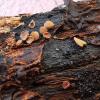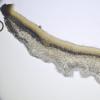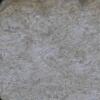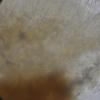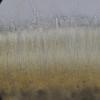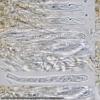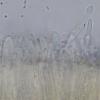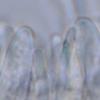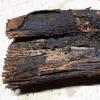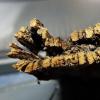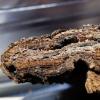
24-12-2025 17:08
Hulda Caroline HolteHello, I have found this propoloid ascomycete on

21-12-2025 09:32
Hello.A tiny ascomycete found embedded in wood in

21-12-2025 21:32
Pol DebaenstHello, Garden, Burgweg 19, Veurne, BelgiumOn 10/1

22-12-2025 23:38
Patrice TANCHAUDBonsoir, rÃĐcolte sur un mur en pierre, apothÃĐci

22-12-2025 00:47
Patrice TANCHAUDBonsoir, rÃĐcolte à proximitÃĐ du milieu dunaire
 Good morning
Good morningThis orange-brown Ciboria or Moellerodiscus, with a darker stem, 2.5 mm, was growing on indeterminate wood, although it could also be a herbaceous remnant, in the Botanical Garden of Funchal (Madeira). It was slightly dry, I took the macro photos after hydrating it with a water spray.
Eight-spores asci, with the 8 spores of similar size, with croziers and apical apparatus IKI+, Sclerotinia type, (59.9) 61.4 - 68.3 (70.5) Ã (4.7) 4.8 - 5.2 (5.8) Âĩm; Q = (10.8) 12.1 - 13.8 (14.2) ; N = 15; Me = 64.3 Ã 5 Âĩm ; Qe = 12.8
Paraphyses were not in very good condition, but in some images cylindrical VBs can be seen.
Spores are variable, from ellipsoidal to fusiform and some almost cylindrical, and many are asymmetrical, apparently they have 1 nucleus, with very few LBs, of (6.3) 6.9 - 9 (9.7) Ã (2.3) 2.5 - 3.1 (3.5) Âĩm; Q = (2.2) 2.5 - 3.4 (4.2) ; N = 63; Me = 7.9 Ã 2.8 Âĩm ; Qe = 2.9.
Ectal excipilum with textura globulosa; medullar excipulum with textura intricata.
With Baral's keys I arrive at Ciboria viridifusca, but this grows on Alnus cones. If the apical apparatus were Hymenoscyphus type, it would be similar to Moellerodiscus tenuistipes. It also resembles M. lentus, but should have more marked LBs, although if the collection was not in good condition, it may have lost them.
Thanks in advance.
Miguel Ãngel Ribes


I asked the collector if he could give me more information about the substrate.
Yes, all the asci are dead.
Tomorrow I will try to find some paraphyses pictures with VBs and I will check the substrate.Â
Thank you very much.


Miguel Ãngel, are you sure about croziers??? I can't find them in the images...
If they are absent, I would consider Moellerodiscus (Ciboria) aestivalis...
RaÚl

So it seems that the only possibility is M. lentus, with spores and paraphyses with few LBs and VBs, respectively, because they are damaged and/or dead.
This afternoon I will try to find out more about the substrate.
Thnaks a lot, Zotto.

In my sections of the apothecia, croziers are not clearly visible, probably due to the half-dead state of the sample. I have been guided by the base of the few asci that I can photograph separately, in which almost none have a straight line. With the attached images I still think that it has croziers, but it is true that I have not clearly seen a young cell together with its basal cell to see it clearly.
Un abrazo.




Yes, I also think it could be some kind of herbaceous plant.
Thank you Zotto.


Thanks for the explanations.
